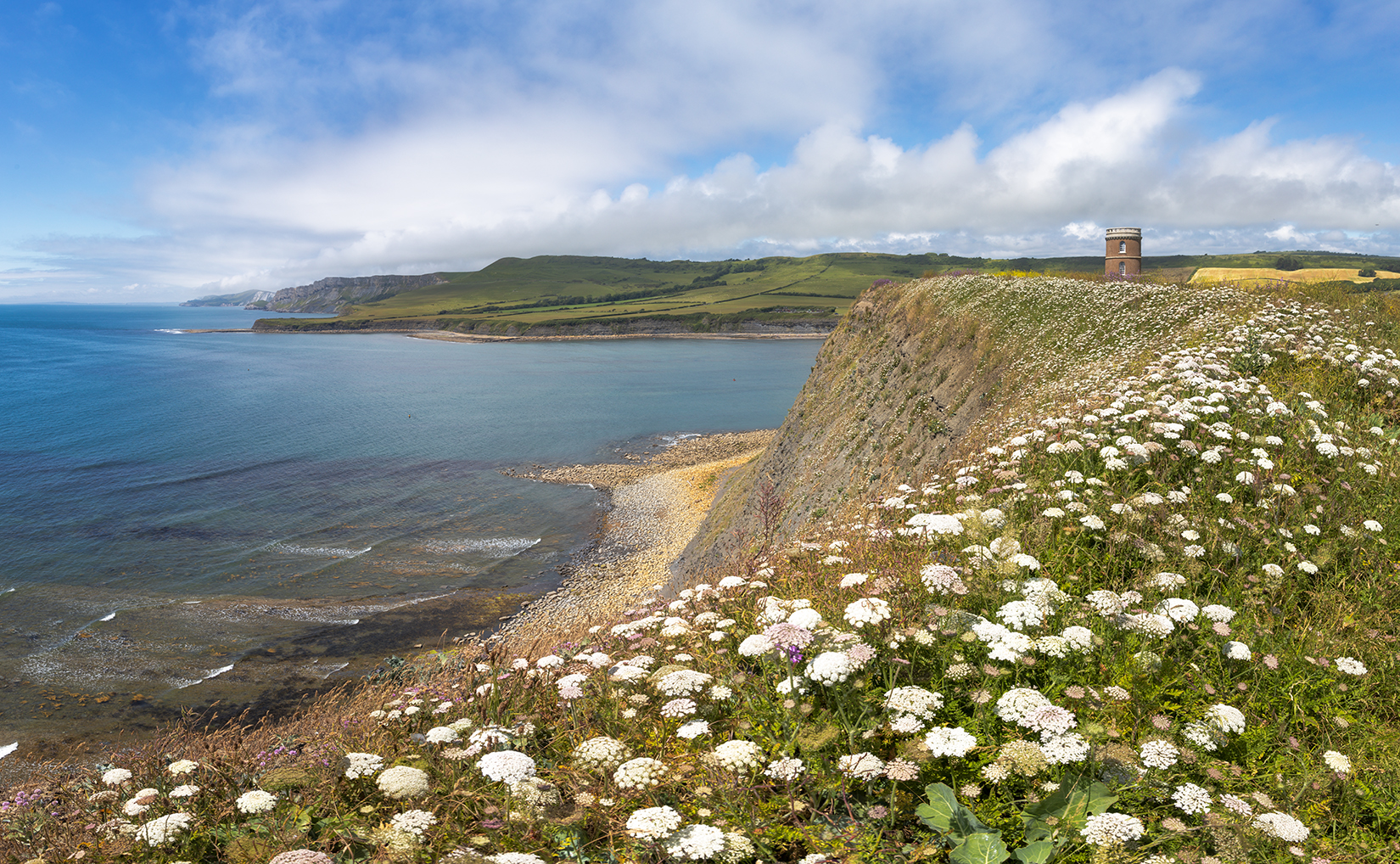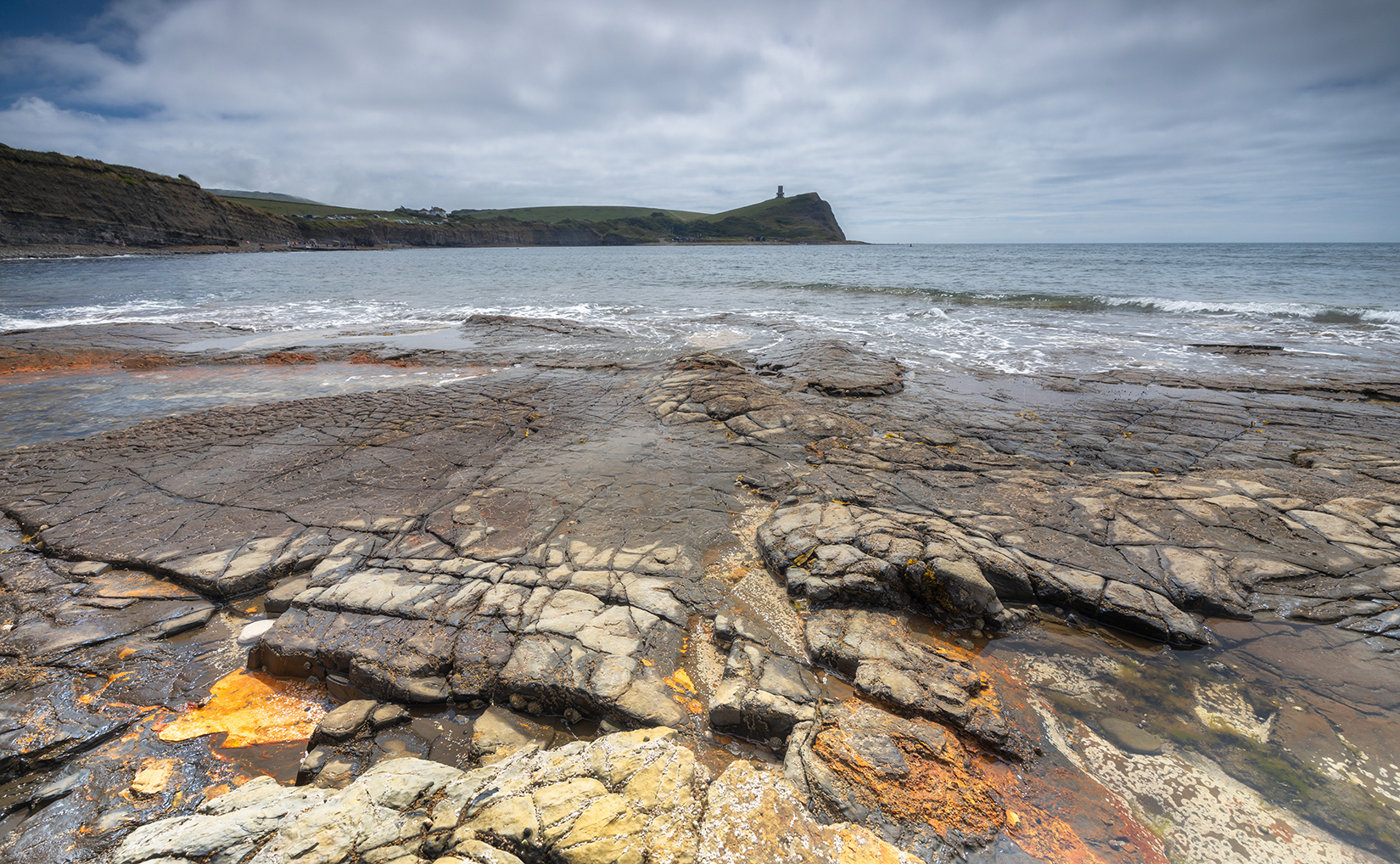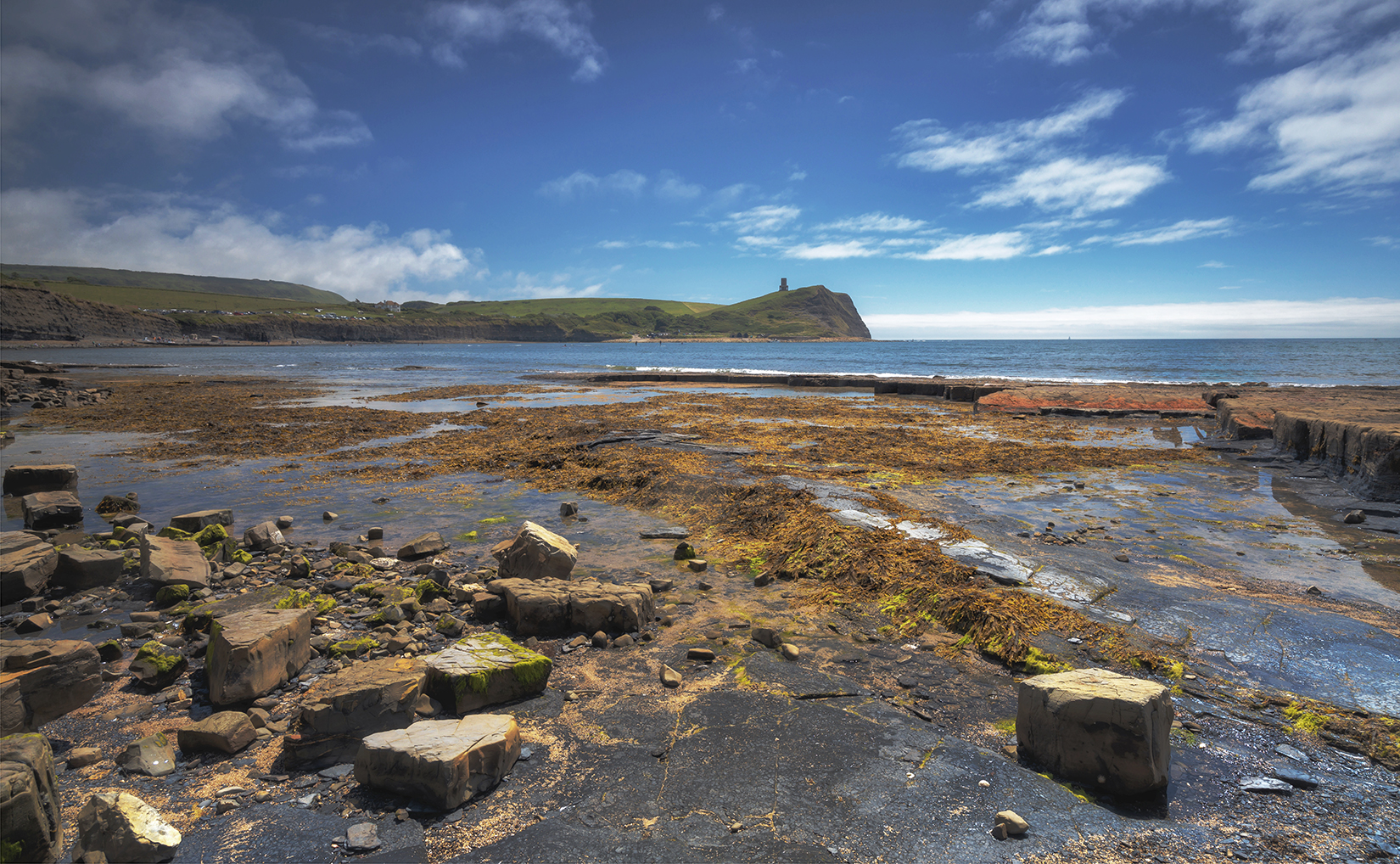Kimmeridge Bay is located on the Jurassic Coast of Dorset. Unlike some of the beaches along the coast, this is not a sandy beach for sunbathing, but a series of rock shelves and pools for exploring. On the headland to the east of the beach stands the Clavell Tower, a 19th Century folly that is also worth visiting. Kimmeridge Bay is located on private ground, and is accessed by a toll road, which on our visit (2024) cost £5. There is no further fee for parking.
Location and Parking
Post Code: BH20 5PF
What 3 Words – tastier.harp.stutter
The main A352 road runs parallel to the Dorset coastline between Dorchester and Wareham. At Wareham, turn south onto the A351, then in 1 mile turn right onto West Lane. Follow the road for 3 miles, then take a left turn towards Steeple. After a further mile turn right onto a minor road with access to Kimmeridge Bay. Follow this road for 1.5 miles to reach the toll booth, beyond which is the road to the car park.
Kimmeridge Rocks And Pools
To the right side of the beach from the car park, there is a large flat expanse of Kimmeridge Clay. This black mudstone was laid down about 150 million years ago and is particularly important because the same rock type is the source of oil in the North Sea. In fact, there is a small oil well close to Kimmeridge Bay.
As the tide goes out it leaves behind numerous rock pools, which are a popular hunting ground for children, looking for small fish or crabs. It is also worth looking out for fossils in the rocks. The most western end of the beach extends into the Lulworth firing range, so a red flag on the hillside shows when this end of the beach is off limits.
The beach would be a good location for both sunrise and sunset, however it would be necessary to park on the public road and walk down the toll road, as the toll road is only open to cars during the day.
The Clavell Tower
The Clavell Tower, which dates from 1830, stands on the eastern headland of the bay and can be reached by a short, steep climb from the left side of the beach. The tower was built as an observatory and folly by Reverend John Richards Clavell, who owned the Kimmeridge estate in the early 1800s. Over the years, the cliffs have been eroded away until the tower was positioned dangerously close to the edge, so in 2006 it was carefully dismantled and re-assembled a short distance further inland. At the same time the interior was upgraded and today it is used as a holiday let, providing a grand view over the bay.
In the summer, there is a profusion of wild flowers around the coastal path close to the tower, which can be used for some attractive foreground interest.





